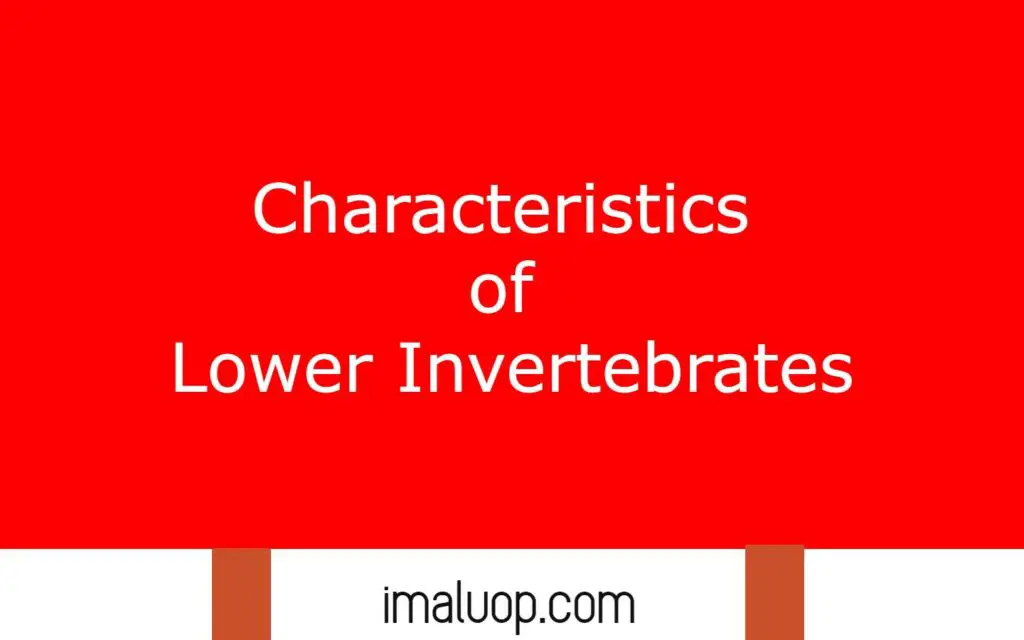Hi, we are going to discuss some lower invertebrates and characteristics of lower invertebrates which will give an idea about their distinguishing features from higher vertebrates of the animal kingdom.
Table of Contents
Lower Invertebrates of Animal Kingdom:
Some phyla of animal kingdom show some character which is not advanced than other phyla of kingdom animalia so they are known as lower animals for example phylum porifera, phylum Cnidaria, phylum ctenophora, phylum platyhelminthes, aschelminthes, annelida, arthropoda, mollusca, echinodermata, hemichordata.
Characteristics of Lower Invertebrates with Examples:
Now we will discuss various characters of different phyla of lower invertebrates and their examples to give you a general overview about the lower invertebrates.
Phylum Porifera:
They are known as porifera or pore bearing animals because their body has multiple small pore which gives them a spongy appearance and bath sponge is a nice example of porifera.
Their body cavity is called a spongocoel in which water reaches through multiple small pores or ostia present in their body while the water exits through a large pore osculum from their spongocoel cavity.
Ostia and osculum connect their canal system with outside through which circulation of nutrients, waste materials, gametes occurs. They are generally asymmetrical and they are the simplest animals as compared to other phyla of Animal Kingdom.
Phylum Cnidaria:
Sea anemone, jellyfish and hydra are the best examples of phylum cnidaria, the name Cnidaria comes from the stinging cells present in them called cnidoblast which helps them to protect themselves against enemies and catch their prey.
They are radially symmetric and diploblastic animals with tissue level of organisation. Their body has a hollow central cavity which is known as a gastrovascular cavity which opens externally through a single opening and with this single opening they take food inside and perform egestion.
Several tentacles like structure encircle this opening and the tentacles have cnidoblast cells which play a great role in capturing their prey and protecting them against their enemy.
Phylum Ctenophora:
It is a small group of animals that generally live in marine environments and show radial symmetry. Their development is indirect with larval stage and they are diploblastic animals, digestion is either extracellular or intracellular. They have 8 comb plates like a special structure which helps them for locomotion in marine environments.
Phylum Platyhelminthes:
They are also known as flatworm due to their dorsoventrally flattened body structure and they are triploblastic for their three germ layer ectoderm, endoderm and mesoderm. Planaria, liver fluke and Intestinal parasite Taenia are nice examples of phylum platyhelminthes and they do not have any body cavity or coelom.
They show bilateral symmetry and they may be parasitic or free living, parasitic Platyhelminthes show some special adaptation which make them efficient in absorption of food from intestine and anchorage in intestinal wall.
Parasitic platyhelminthes show reduction in some function which is not required for parasites because they live inside the intestine most of the time so they do not need some organs to be very much efficient.
They show organ level of organisation in which different organs become specialised for different types of function and they have a special type of cell called flame cell for excretion which is a special characteristic feature of phylum platyhelminthes.
Platyhelminthes also have one another species characteristics feature they have high power of regeneration which is a mode of vegetative reproduction.

Phylum Aschelminthes:
They are popularly known as roundworms due to their cylindrical body which seem round in transverse sections. Ascaris, pinworms, and hookworms are nice examples of phylum Aschelminthes and they may be free living or parasitic in nature.
They are bilaterally symmetrical and triploblastic animals and they have false coelom which is called as pseudocoelom. Their alimentary canal is complete with two openings and fertilization is internal, they show organ systems level of organisation.
Reference: Characteristics of Lower Invertebrates
Read More: Structure of Animal Cells
Hi Everyone!!! Welcome to Imaluop. Imaluop always try to learn some new and he want to share to other people. Here we will try to learn various topics on Science, specially on Biological Sciences.
